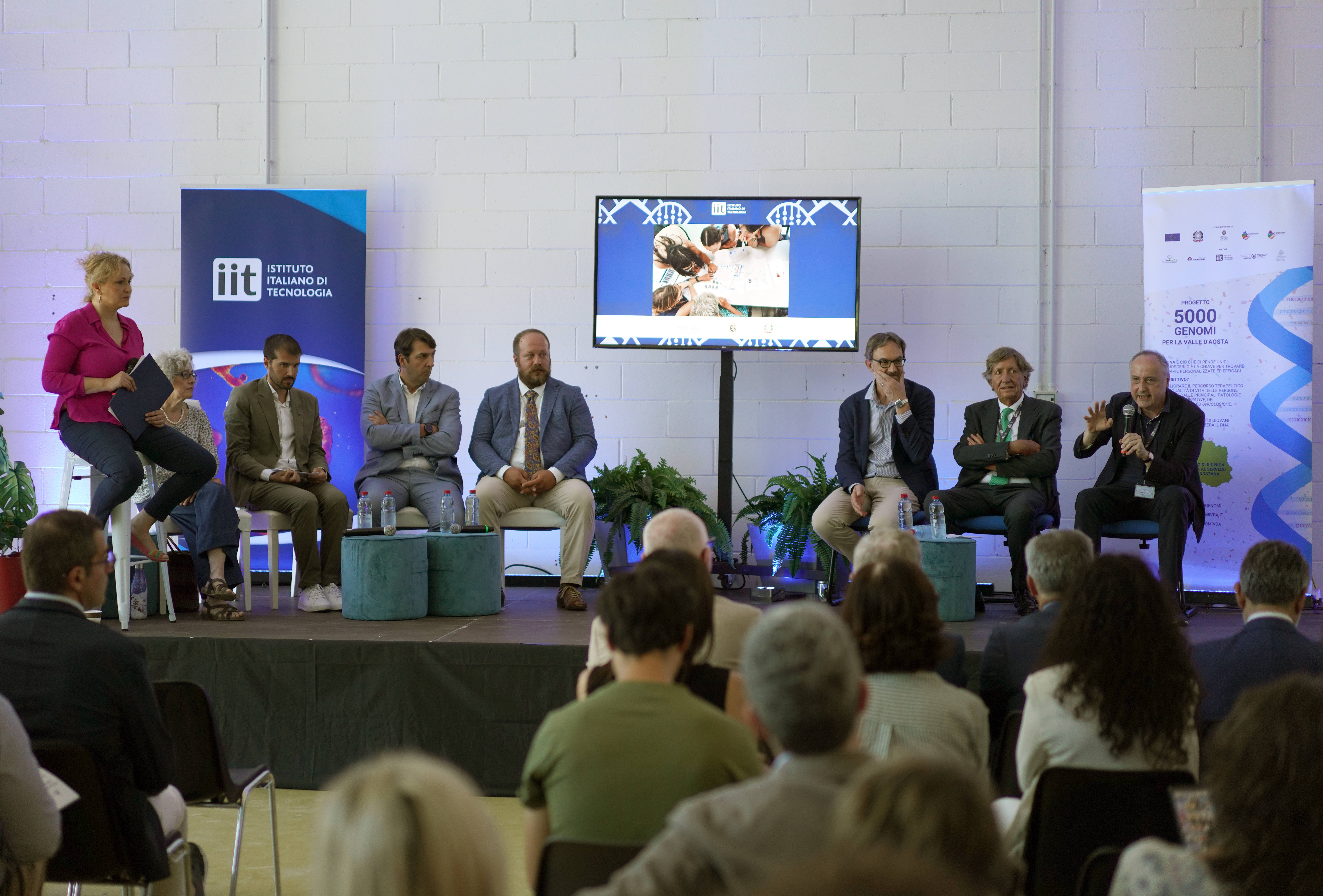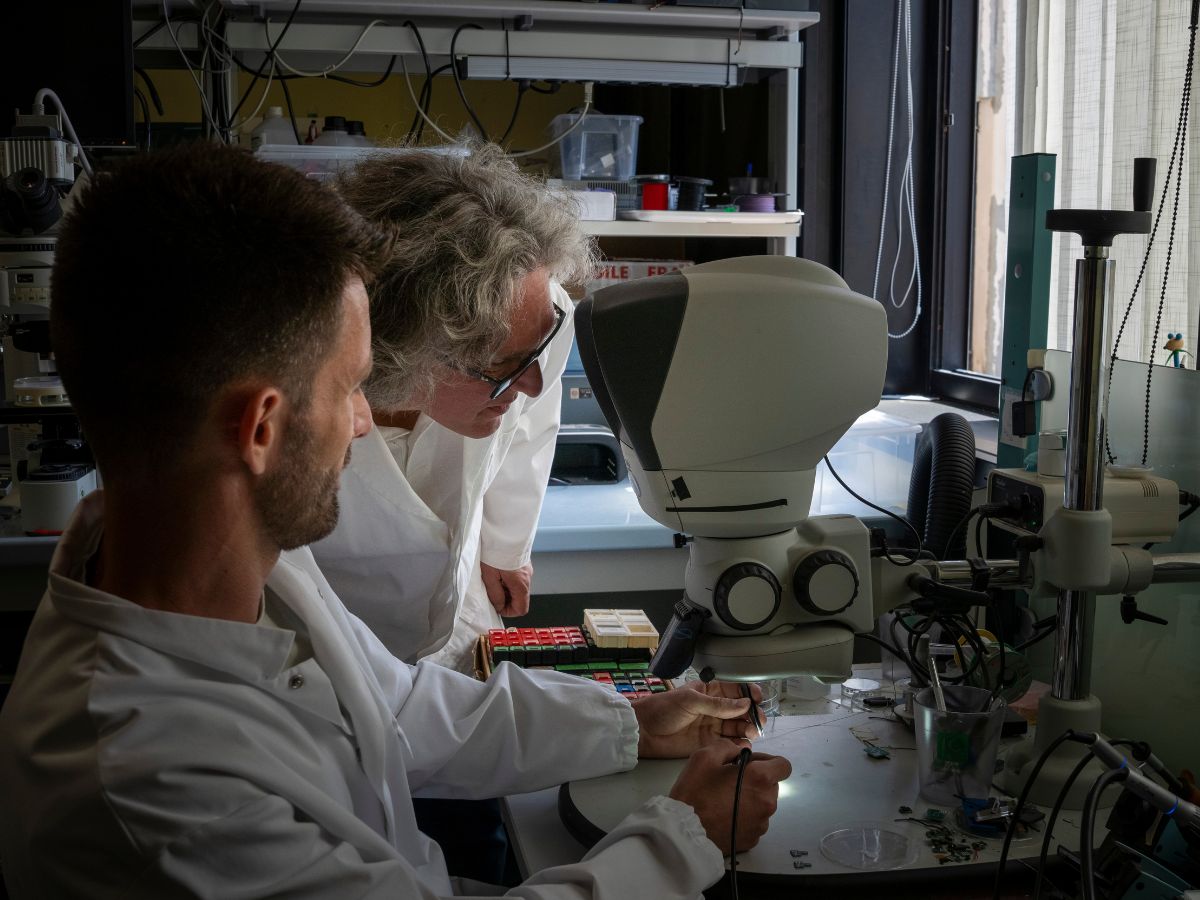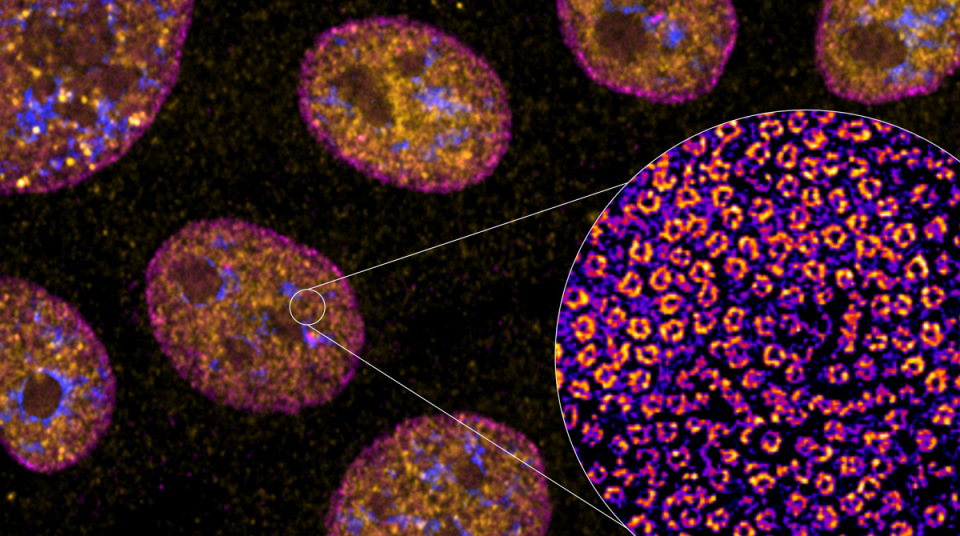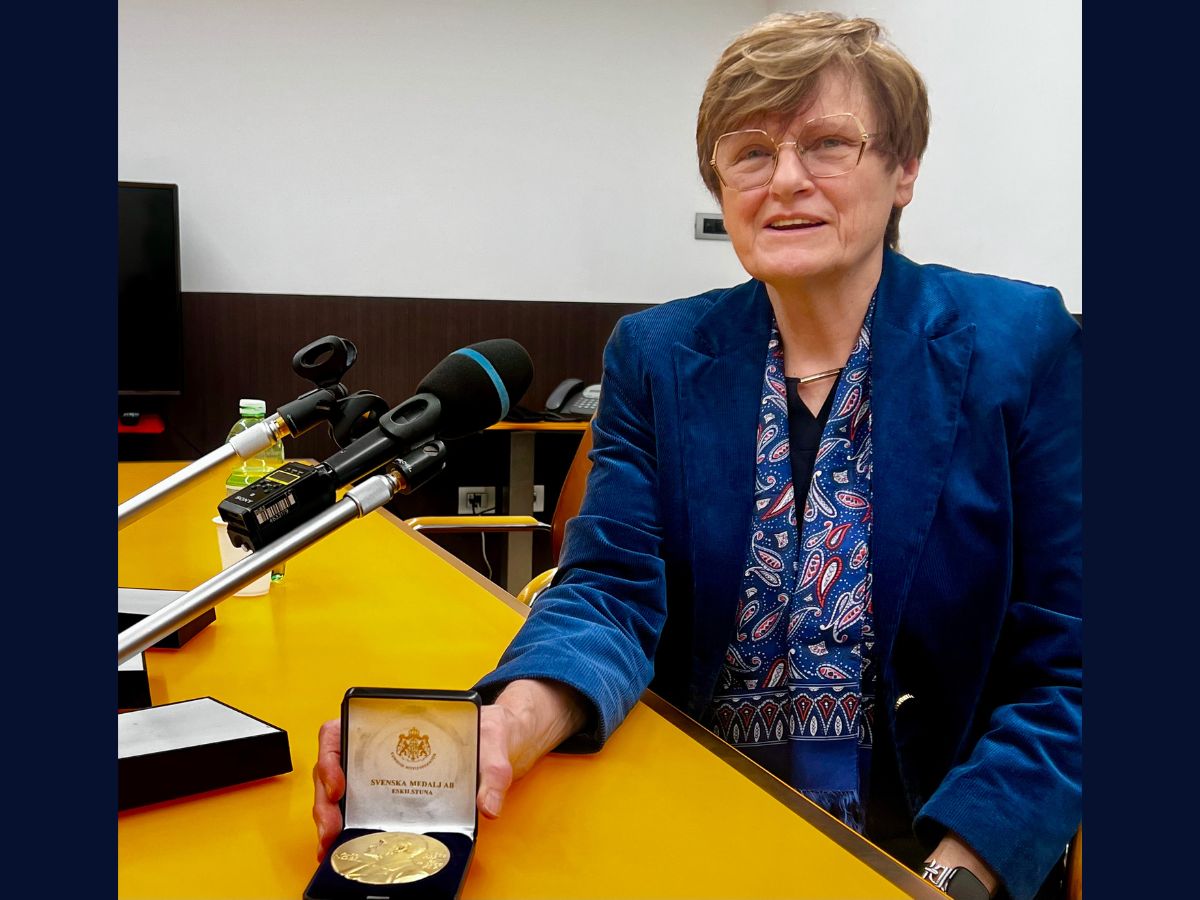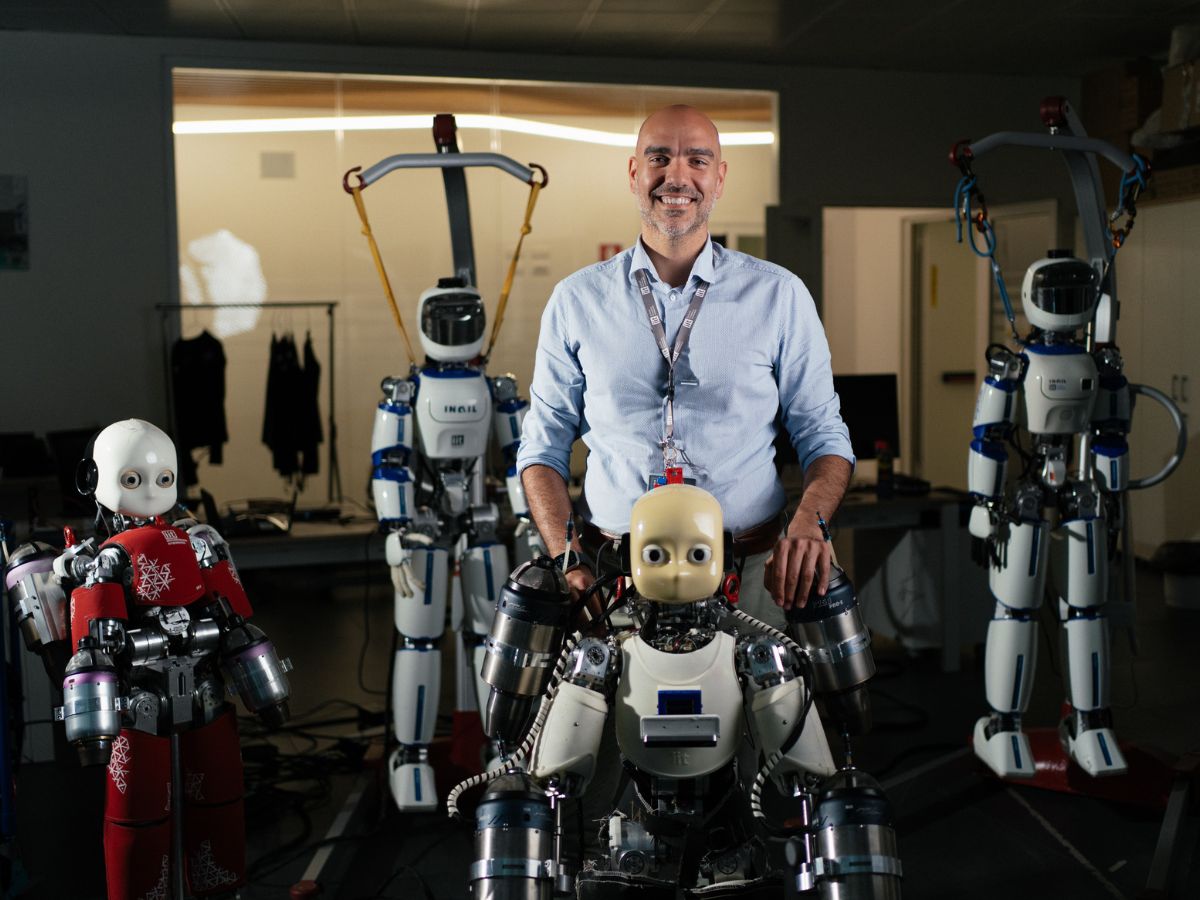Born from the 5000genomi@VdA project coordinated by IIT and supported by the Autonomous Region of Valle d’Aosta, the new Center joins IIT’s national network as the institute’s twelfth hub
Italian Institute of Technology (IIT) unveiled its new Aosta center today, as the culmination of the five-year 5000genomi@VdA project that IIT coordinated. The project created a new research infrastructure for personalized, precision and predictive medicine and sequenced over 5,400 patient genomes in collaboration with hospitals in Valle d’Aosta and other Italian regions. The Center becomes the twelfth hub in the Institute’s national network, strengthening IIT’s ability to promote new models of interaction with local institutions, particularly IRCSS, by integrating advanced genomics and artificial intelligence technologies into disease prevention, diagnosis and treatment. The Center aims to introduce genomics more broadly into the National Health System in a transparent, equitable and economically sustainable way. Alongside diagnostic genomic medicine, the Center will focus particularly on Parkinson’s disease and pancreatic cancer.
Representatives from the Autonomous Region of Valle d’Aosta attended the event, including President Renzo Testolin, Vice President and Asessor for Economic Development, Education and Labor, Transport and Sustainable Mobility Luigi Bertschy, and Health and Social Policies Assessor Carlo Marzi. Following opening remarks by IIT President Gabriele Galateri di Genola, speakers discussed the 5000genomi@VdA project’s achievements and Scientific Director Giorgio Metta presented the new IIT Center’s future objectives.
TGR Valle d’Aosta journalist Loredana Pianta moderated the event.
Precision medicine allows researchers to study the genomic profile of individuals who have given their consent after receiving adequate information and combine it with data about medical history and lifestyle habits. Genome analysis identifies the genomic variants that cause diseases in each individual patient, enabling diagnosis of rare and ultra-rare diseases and designing the most appropriate therapeutic strategy.
The Center will serve as a reference point for developing new knowledge in clinical and computational genomics. Its activities will include: integrating genomics into National Health System processes, defining guidelines for operating as a diagnostic laboratory and managing clinical and genomic data, developing bioinformatics tools to identify genetic variants, improving electronic health records (EHR) by including genetic information, creating IT infrastructures dedicated to managing genomic data, and applying advanced technologies like artificial intelligence (AI) and machine learning (ML) to analyze them. The Center will also explore new genetic sequencing technologies and establish expert groups to evaluate genetic mutations, with the goal of developing personalized therapies, including RNA-based ones.
Finally, the Center will expand its existing network of collaborations with AUSL Valle d’Aosta, hospitals and IRCSS institutions, including Parini and Beauregard Hospitals in Aosta, IRCCS San Martino in Genoa, Fondazione IRCCS Ca’ Granda Ospedale Maggiore Policlinico and Humanitas Hospital in Milan, Sant’Orsola Hospital in Bologna, and the Polyclinic of Bari.
“This choice strengthens the regional strategy for scientific research, laying the foundations for an industrial ecosystem capable of attracting talent, stimulating the birth of start-ups and generating lasting economic and social benefits by creating an ecosystem that combines business and research, innovation and health. With this new presence, Valle d’Aosta establishes itself as a territory not only of great natural value, but also capable of expressing scientific excellence projected into the future,” emphasizes Regional Minister Luigi Bertschy.
“One of IIT’s fundamental missions is ensuring that research results leave the laboratories and translate into concrete benefits for people’s daily lives. With the new IIT Center in Valle d’Aosta, we want to accelerate the transfer of knowledge and technologies in the health field, contributing to building increasingly personalized, predictive and precision medicine. Being in the territories, close to patients, is essential for this transfer from research to be effective,” comments Giorgio Metta, IIT Scientific Director.
From the 5000genomi@VdA project to the new IIT Center
The 5000genomi@VdA project launched in 2019, involving a research consortium that IIT led, composed of the University of Valle d’Aosta, A.O.U. Città della Salute e della Scienza in Turin, the Clément Fillietroz-ONLUS Foundation Astronomical Observatory of the Autonomous Region of Valle d’Aosta, and Engineering D.HUB. Teams built the laboratories during the COVID-19 pandemic and completed them during the first half of 2021. The Center received accreditation from the National Health Service as a specialist laboratory in Medical Genetics and Genomics (with reference to neurodegenerative and oncological diseases) in November 2023.
By the end of the project, researchers had sequenced over 5,400 genomes, including: cancer patients’ genomes to develop a new personalized genomic panel for genetic alterations prevalent in the Valle d’Aosta population; genomes from families with children affected by autism spectrum disorders and other cognitive disorders, to investigate their genetic origin and improve both early diagnosis systems and possible treatments; patients with Alzheimer’s or Parkinson’s disease (with a significant number of 1,700 individuals for the latter) to identify known genomic variants causing or creating susceptibility to neurodegenerative diseases; organ transplant patients to identify genomic variants not yet recognized as causes or susceptibility factors for diseases treatable with transplantation. Over 500 genomes came from healthy people with Valle d’Aosta origins to build a reference genome for the region, thanks to collaboration with blood donor associations FIDAS and AVIS.
Stefano Gustincich, project scientific co-coordinator and Director of IIT’s RNA lab, Andrea Cavalli, project scientific co-coordinator and IIT Principal Investigator, Giuseppe Cafiso, Technical Manager of Engineering D.HUB (Engineering Group), Jean Marc Christille, Director of the Clément Fillietroz-ONLUS Foundation Astronomical Observatory, Anna Maria Alessandra Merlo, Adjunct Professor of corporate responsibility and rector’s delegate for guidance and placement at the University of Valle d’Aosta, Antonio Amoroso, Technical Director of the Center and former Director of the Transplant Department at A.O.U. Città della Salute e della Scienza in Turin, and Dr. Agostino Ponzetti, Medical Director of Oncology and Hematology-Oncology at “Parini” Hospital, presented the project’s results.
The Autonomous Region of Valle d’Aosta contributed to the 5000genomi@VdA project with European Union structural funds (ERDF and ESF) and regional funds for a total of 12.2 million euros over 5 years, and the consortium added 9.7 million euros with co-financing.
Following these results, both the Valle d’Aosta Region, with Regional Council approval in December 2024, and Italian Institute of Technology, with Executive Committee validation in July and September 2024, approved stabilizing the research infrastructure as IIT new Aosta Center. IIT will invest approximately 12 million euros over 5 years. Project partners will continue contributing to the new Center’s activities through scientific collaborations, including joint laboratories.
The Center will continue ongoing studies and will focus its attention on Parkinson’s disease and pancreatic cancer. Parkinson’s is a progressive neurodegenerative disease causing movement disorders and other non-motor symptoms. Currently no definitive cure exists, but drug and non-drug therapies can help manage symptoms and improve quality of life. Pancreatic cancer, meanwhile, has the lowest survival rate both one and five years after diagnosis. In Italy there are an estimated 14,500 new cases annually.
The new IIT Center
The Center occupies the “Espace Aosta” area in Aosta, with laboratory space of 450 square meters, and consists of two Departments, one for Medical Genomics and another for Computational Genomics, where highly qualified personnel have worked since 2019 and today staff reaches approximately 30 people. This staff will continue ongoing researches and the Center will train young fellows supported by the European Social Fund (ESF+), fostering new professional profiles.
These two Departments represent the Center’s original element, allowing genomics and computational sciences to unite in a streamlined, continuous workflow integrated with clinical practice.
The Medical Genetics Department houses equipment dedicated to complete genetic material analysis: Illumina NovaSeq 6000 and Oxford Nanopore Technology PromethION 24 sequencers. The NovaSeq 6000 uses second-generation technology (NGS – Next Generation Sequencing) and can sequence the entire genome of approximately 60 samples in less than 44 hours. The PromethION 24 uses third-generation technology that provides data complementary to the Illumina instrument. Both instruments have applications useful for numerous DNA and RNA research activities. The laboratory can also confirm sequencing data from cell cultures, contributing to scientific research progress.
The computational genomics area generates bioinformatics programs suitable for analyzing and interpreting data from the sequencers. Here, beyond a virtualization cluster supporting laboratory activities and genomic data pre-processing phases, particular workstations, each with 16-core processors, 2 GPUs and 32 GB of RAM, handle programming and developing specific software that Center researchers create specifically for diagnostic and research purposes. The Department connects to a High-Performance Computing infrastructure.
Italian Institute of Technology
Italian Institute of Technology (IIT) is a state-funded scientific research center promoting technological development to support excellence in basic and applied research and foster the national economic system’s development. IIT’s research activity features strong multidisciplinarity and covers four scientific areas: robotics, nanomaterials, computational sciences, and technologies for life sciences. IIT’s output today boasts more than 20,000 publications, over 800 active competitive projects and over 60 ERC projects, more than 1,300 active patent titles, over 900 signed commercial collaboration contracts, 37 established start-ups and more than 50 in the launch phase. Patents break down as 8% in computational sciences research, 25% in technologies for life sciences, 41% in nanomaterials and 26% in robotics. IIT’s overall staff totals more than 1,800 people, with 50% coming from abroad, from over 70 countries worldwide. IIT personnel average 36 years old and 45% are women.
IIT’s research infrastructure totals over 50,000 square meters, comprising five central research laboratories in Genoa and eleven satellite research centers across Italy and abroad.
The central research laboratories host more than 1,000 people, while the Network Centers are smaller structures employing between 30 and 100 staff members, depending on location.
The eleven satellite research centers across Italy are in Turin, two in Milan, Rovereto (TN), Venice, Ferrara, Pisa, Pontedera (PI), Rome, Naples, and Arnesano (LE), located within important Italian university institutes, plus two laboratories in the United States at the Massachusetts Institute of Technology (MIT) and Harvard University. Aosta Center joins this national network.

